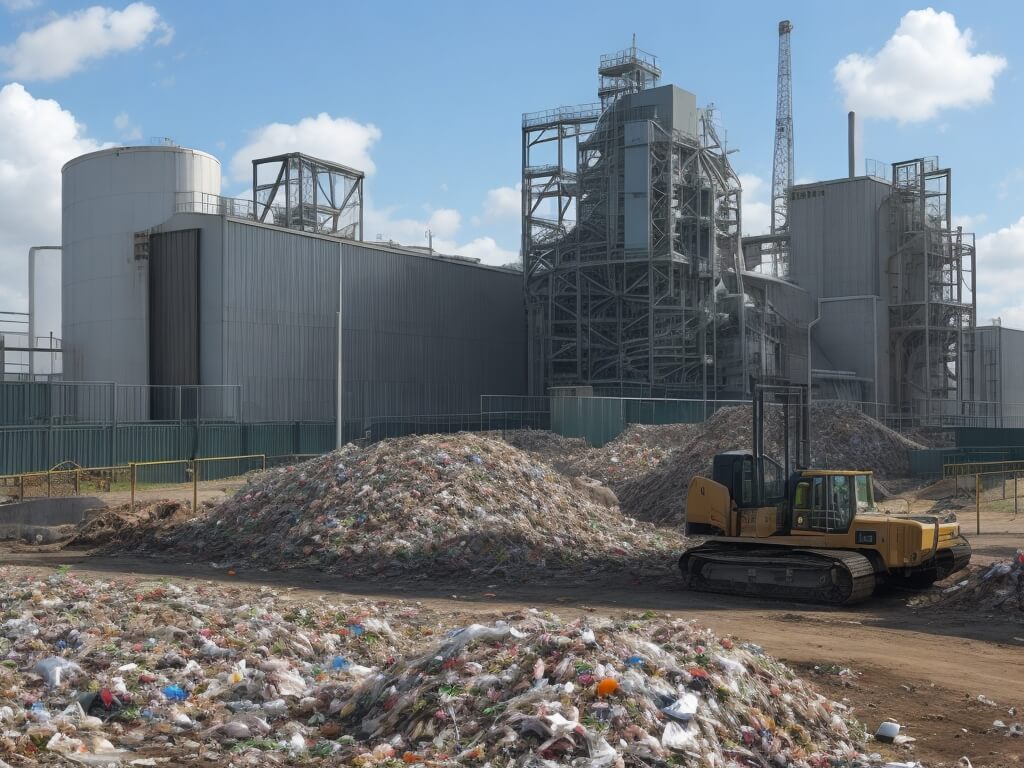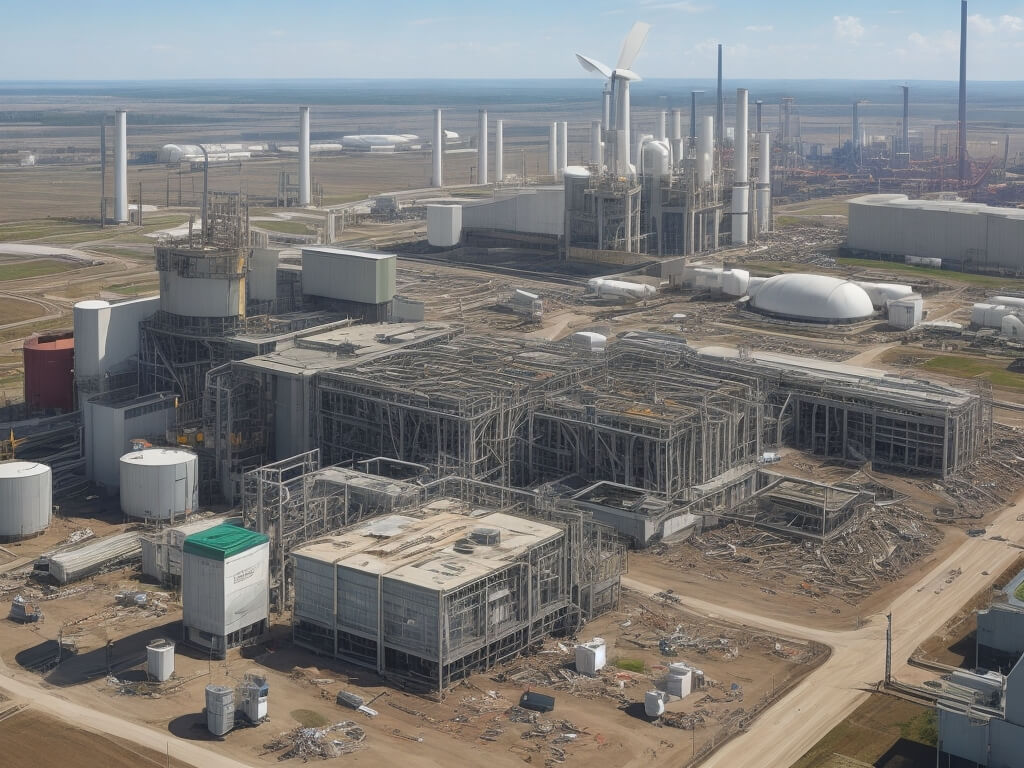
Waste-to-energy technologies have emerged as a promising solution to tackle the dual challenge of waste management and sustainable energy production. While many are familiar with conventional methods like incineration and anaerobic digestion, there are innovative waste-to-energy technologies that might have slipped under your radar.
Plasma Gasification
Have you ever imagined turning waste into energy beams? This cutting-edge process employs superheated plasma to break down waste into its fundamental elements, resulting in the synthesis of syngas — a valuable mixture of hydrogen and carbon monoxide. The versatility of syngas opens up exciting possibilities, as it can be utilized to generate electricity or serve as a precursor for the production of biofuels.
By converting waste into syngas, harmful pollutants and greenhouse gas emissions associated with traditional waste disposal methods are significantly reduced. The process contributes to a more sustainable and eco-friendly energy production landscape.
The potential applications of syngas extend beyond electricity generation. It serves as a key ingredient in the creation of biofuels, contributing to the development of renewable and environmentally friendly energy sources. The utilization of waste as a resource for energy production aligns with the principles of a circular economy, where materials are reused and repurposed, minimizing their impact on the environment.
By harnessing the power of superheated plasma, this technology not only transforms waste into valuable energy but also offers a glimpse into a more sustainable and cleaner energy future. It’s a futuristic solution that combines waste management efficiency with the creation of cleaner energy sources, marking a significant step towards a greener and more sustainable planet.
Microbial Fuel Cells
Envision a realm where microscopic powerhouses operate within your waste – the enchantment brought forth by microbial fuel cells (MFCs). Picture the captivating magic of MFCs, these ingenious devices that leverage the capabilities of microorganisms to dismantle organic matter, ultimately generating electrical energy. Intriguingly versatile, MFCs exhibit a remarkable ability to extract energy from a diverse spectrum of waste types, ranging from agricultural residues to wastewater. As these minuscule cells indulge in feasting upon organic waste, they not only contribute to efficient waste disposal but also assume a central role in the generation of sustainable green energy.
Microorganisms, often embodied as bacteria, serve as biological reactors within MFCs, consuming organic materials and generating electrons as a byproduct of their metabolic activities. The true marvel unfolds when these electrons are harnessed to produce a seamless flow of electricity, transforming the microbial feast into a reliable and sustainable source of power. This dual-purpose functionality not only renders waste disposal dynamic but also offers tangible environmental benefits.
A distinctive trait of MFCs lies in their adaptability across a myriad of waste streams. Demonstrating efficiency, these cells adeptly convert a broad spectrum of organic materials into a valuable energy resource, showcasing their potential as a versatile and eco-friendly solution within waste-to-energy technologies.
Microbial fuel cells epitomize a harmonious fusion of waste disposal and green energy generation.
Pyrolysis
In waste-to-energy technologies, pyrolysis stands out for its distinctive approach to waste conversion. Unlike traditional burning methods, pyrolysis subjects waste to high temperatures in the absence of oxygen, initiating a thermal decomposition process that yields valuable resources — biochar, bio-oil, and syngas. This innovative technique minimizes waste and transforms it into essential components, thereby contributing to the development of a more sustainable and circular economy.
At the core of pyrolysis is the controlled application of heat, a process that breaks down organic matter into its elemental components without combustion. Biochar is a nutrient-rich material that finds application as a soil amendment, enhancing soil fertility and structure. Simultaneously, bio-oil, a renewable fuel with applications in various industries, is produced during the pyrolysis process. The synthesis of syngas provides an additional avenue for sustainable energy generation, supporting electricity production in an eco-friendly manner.
The significance of pyrolysis lies in its waste-reduction capabilities and in the creation of valuable resources that align with the principles of a circular economy. By repurposing waste into biochar for agriculture, bio-oil for energy, and syngas for electricity, pyrolysis transforms the conventional view of waste as a burden into an opportunity for resource recovery.
Pyrolysis emerges as a transformative force in the waste management landscape. By harnessing controlled heat, this technology addresses the challenge of waste reduction and paves the way for the creation of valuable resources. Embracing pyrolysis is a step towards a more sustainable and circular approach to waste management, where waste becomes a valuable contributor to a greener and more eco-conscious future.
Algae-based Bioenergy
When delving into the waste-to-energy, algae may not be the initial contender that springs to mind. Yet, these remarkable organisms possess an extraordinary ability to convert organic waste into biofuels through a process known as algal bioenergy. Algae, often overlooked in waste management conversations, absorb nutrients from wastewater, transforming them into lipids that can be refined into biodiesel. This environmentally friendly process unveils a renewable and carbon-neutral source of energy.
The allure of algae-based bioenergy lies in its sustainable and eco-friendly attributes. Unlike traditional waste disposal methods, which often contribute to environmental degradation, algal bioenergy turns organic waste into a valuable resource.
The environmental benefits extend further as the lipids derived from algae can be converted into biodiesel a cleaner alternative to traditional fossil fuels. Biodiesel produced from algal bioenergy is not only renewable but also carbon-neutral, meaning it doesn’t contribute to the net increase of carbon dioxide in the atmosphere. This positions algae as a promising player in the pursuit of sustainable and green energy solutions.
Hydrothermal Carbonization
Imagine waste undergoing a slow cooking process, but instead of a delectable dish, what emerges is hydrochar a carbon-rich marvel. This unique transformation is the magic of hydrothermal carbonization (HTC). In this process, wet biomass is subjected to high temperatures and pressures, culminating in the creation of a valuable carbon-rich material. Hydrochar, the end product, holds dual capabilities — it can serve as a solid fuel or be utilized as a soil conditioner.
Hydrothermal carbonization mimics the slow-cooking concept, but with a green twist. By subjecting wet biomass to controlled conditions, the process transforms organic materials into hydrochar, a material with diverse applications. As a solid fuel, hydrochar becomes a sustainable alternative for energy generation, offering a cleaner and more environmentally friendly option compared to conventional fossil fuels.
The versatility of hydrochar extends beyond energy generation. When used as a soil conditioner, hydrochar enhances soil structure and fertility. This dual functionality aligns with the principles of a circular economy, where waste is transformed into valuable resources that contribute to sustainable practices.
Hydrothermal carbonization surfaces as an innovative answer in the waste-to-energy realm. Through the conversion of waste into carbon gold, this technique not only lessens waste volume but also furnishes a precious resource applicable in both energy generation and agriculture.

